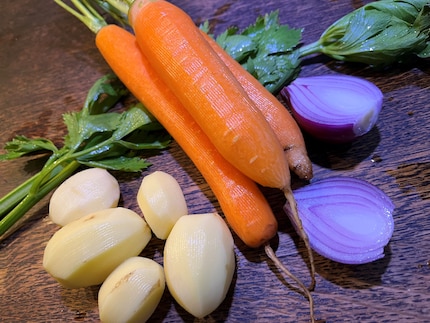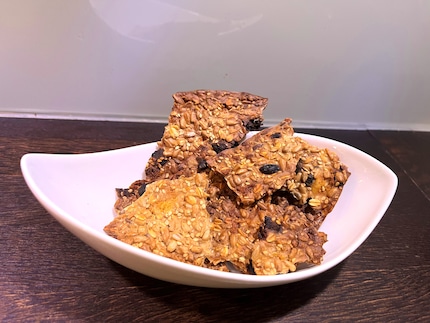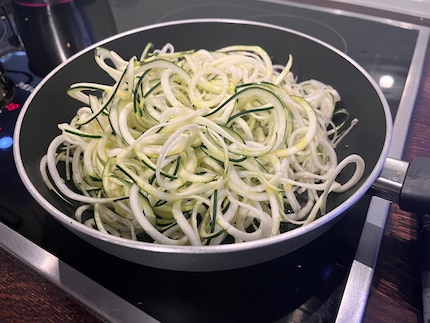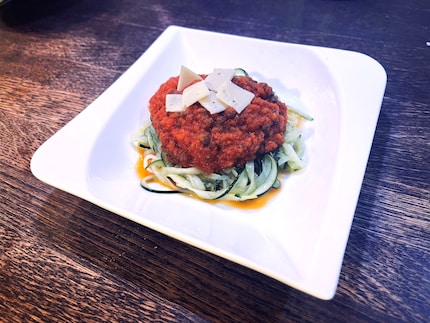
Guide
Interview: What can I still eat?
by Anna Sandner

What do people eat to keep them healthy into old age, and what can science teach us about it? Popular author Bas Kast has served up the answer to these questions in recipe form. I perused his cookbook and did a taste test of all the food that’s supposed to promote a long life.
A few years later, Bas Kast then took on board a request from many of his readers by joining forces with cook Michaela Baur to develop recipes that would accompany the nutritional recommendations. The result is the Cookbook to The Diet Compass.
Over the course of his many years of research, Bas came across similar diets in diverse places around the world as well as in the hundreds of studies into nutrition that leads to a long, healthy life.
He boils his findings down to 10 golden rules:
In the first 40 pages of the cookbook, Bas briefly explains the most important background information and connections with The Diet Compass. If you want to know at a glance what to look out for in your diet, this quick read will give you the basic knowledge you need for the recipes that follow.
The following nutrition traffic light once again displays a selection of common foods based on their relevant categories. Green for foods that you can eat in large quantities with a clear conscience. Yellow for those you can eat but don’t have to in order to stay healthy. And red for foods you’re better off avoiding.
Bas explains that it’s not just what you eat that’s important, but also when you eat it. After all, our metabolism varies throughout the day. This is where the old adage «eat like a king for breakfast and a pauper for dinner» comes into its own.
To illustrate this, he cites a study in which women followed a high-calorie diet. The only difference being that one group enjoyed an ample breakfast and a sparse dinner, while the other had an sparse breakfast and an ample dinner. After twelve weeks, the participants in the first group had lost an average of five kilogrammes more. Bas recommends eating most of your daily calories by 3 p.m. at the latest and, ideally, not eating anything after 7 or 8 p.m.
The 111 recipes in the cookbook are then also organised by time of day: morning, noon and evening.
Personally, I think the findings from The Diet Compass make sense, and fortunately, I’ve followed a similar diet before. However, there are of course some things I could still do with removing from my plate (think: sweets) and others it would be helpful to include more often. So I dug into the cookbook and tested a few recipes.
What’s become an absolute hit and is certainly always on the family menu is crispbread crackers. Mix wholewheat flour, oats, sunflower seeds, linseeds and salt with water, spread on a baking sheet and cook in the oven for an hour. Voilà, your healthy snack is ready.
I’m most thrilled about the fact that even my son (who doesn’t actually likes sunflower seeds or linseeds) couldn’t get enough of them. They’re a great alternative to pretzel sticks and processed crackers or crisps.
The second dish I tested out, lentil bolognese with courgetti (courgette spaghetti) also went down well. Brown lentils, celeriac, carrots and strained tomatoes seasoned with onions, garlic and red wine can be made into a great vegetarian alternative to beef bolognese in a reasonable amount of time. Served with courgetti and garnished with a bit of cheese, this healthy dish is perfect.
Even though the consistency of the courgetti takes a bit of getting used to, I was amazed at how filling the dish was, even without «regular» pasta. For our seven-year-old (who’s terrified of courgette), however, this unconventional spaghetti wasn’t an acceptable alternative. I had to sub it for wholewheat pasta to get him excited about the meal.
For the first 40 pages of the book alone that give you an (understandably) summarised taste of decades of nutrition research, I thought the book was worth it. Moreover, of the 111 recipes, some of them will also be added to my meal planner in future. I’m sure I’ll come across new, delicious dishes more often, which will result in a healthy diet for the whole family.
There is still one small issue. Some of the dishes are quite elaborate and/or time-consuming, which makes it hard to use the cookbook every day. But that’s a common problem with home cooking. The book redeems itself with dishes that aren’t difficult to prepare.
I wonder which of them will secure a permanent slot on my menu. Hopefully, it’ll be a lot, and right now, it’s looking promising.
Header image: Anna SandnerScience editor and biologist. I love animals and am fascinated by plants, their abilities and everything you can do with them. That's why my favourite place is always the outdoors - somewhere in nature, preferably in my wild garden.
Practical solutions for everyday problems with technology, household hacks and much more.
Show allAs a science editor, I’m used to reading studies. It’s a pretty boring undertaking at times, I have to admit. And until I get an established overview of a topic, it often requires time-consuming research. So I was delighted when I came across The Diet Compass by Bas Kast a few years ago. In his bestseller, the science journalist painstakingly decoded the essence of healthy nutrition based on scientific studies and the diets of people who stay particularly healthy into old age. The result is The Diet Compass, a book I recommend to anyone who wants to get to grips with healthy eating in a science-based, sustainable way.

If you want to digest the information even faster, the Food Pyramid gives an overview.
According to this, the basis of your diet should be comprised of vegetables, fruit, plant oil, nuts, seeds, lentils, beans, oats, wholemeal bread and pasta. Next comes seafood and oily fish, yogurt, cottage cheese and kefir. The following level is eggs, cheese and tofu, followed by potatoes, rice, butter and chicken. Finally, at the top of the pyramid, and therefore making up a very small part of your diet, comes milk, salt, sweets and red meat.


